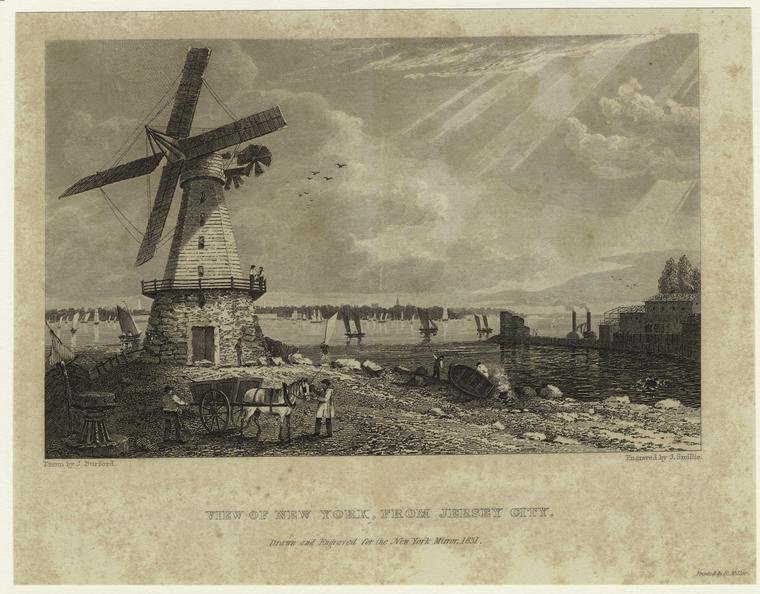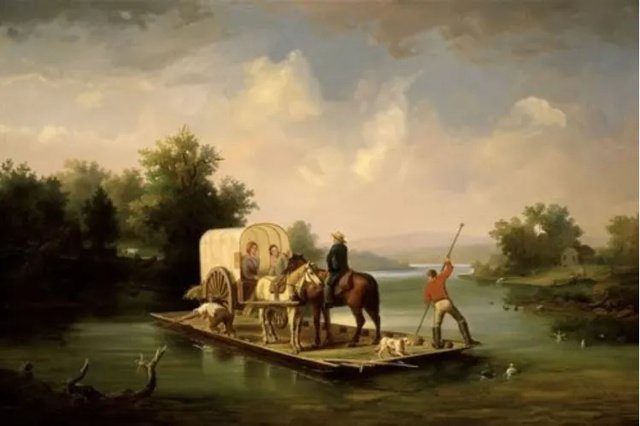The Revolutionary War Battle of Paulus Hook and How It Changed America Today.
"Because of its proximity to the 13 colonies, more battles were fought in New Jersey than in any other state during the Revolutionary War."
Throughout much of Hudson County, New Jersey you will find historic reminders of the Revolutionary War battles that were fought across the county but none more important than the Battle of Paulus Hook fought in what is now Jersey City’s downtown neighborhood.
The Important location of Paulus Hook
Paulus Hook, also known as Powles Hook, was located on a peninsula jutting into the Hudson River from New Jersey. Although its elevation was barely above sea level, Paulus Hook was surrounded on three sides by the Hudson River and on the west by a sizable marsh that flooded at high tide. A marshy stretch of land tucked away, isolated from the rest of Jersey City, the location of Fort Paulus Hook was strategically important to the outcome of the Paulus Hok conflict.
Leading up to the Battle of Paulus Hook
Initially built in 1776 as an American fort at the insistence of General Washington, Fort Paulus Hook had never been finished or utilized to its full potential. Having suffered the devastating defeat of the Battle of Long Island, loss of Brooklyn Heights and the control of New York City, American troops were feeling the blow of the elite military force and power of the British redcoats. In September 1776 the British set their sights on Fort Paulus Hook. Knowing they didn’t have the force to fight back, the American troops abandoned the fort and scrambled to nearby Bergen Town to store their ammunition and essential war supplies. The fort became the first New Jersey territory invaded and occupied by the British.
While under British control Fort Paulus Hook was upgraded and expanded, the only land approach that was left was a long road that rose above the surrounding marsh, and a drawbridge crossing over the tidal moat that surrounded the peninsula. Protecting the fort from attack were multiple army barracks and “block houses” that provided protection to troops stationed as lookout. The fort which sat upon Jersey City’s modern day streets of Washington, Sussex, Greene and Morris spanned 150 feet across and is a far cry from the bustling urban area that is known as Jersey City today.
Major Henry "Light Horse Harry" Lee
The British still occupied the strategic position on the Hudson River in the summer of 1776 when Major Henry "Light Horse Harry" Lee, a 23-year-old graduate of the College of New Jersey (now Princeton University) decided to draft up a plan to attack Fort Paulus hook. He, like General Washington, understood the importance of Paulus Hook straddling New York City and the rest of New Jersey.
His idea was not to seize the post, which the Americans would not
be able to hold, but using what he observed as “negligent security” as an opportunity to successfully attack
In the plan that General Lee submitted for approval, he requested that 600 men join him in the mission which General Stirling regarded as “an object of inferior importance."
In the evening of August 18, 1779, just a week after receiving General Stirlings approval, Major Lee led 300 war-weary Continental soldiers on the 18-mile march from New Bridge Landing, New Jersey to Paulus Hook. His plan was to approach Paulus Hook through the marshes leading to Harsimus Creek and Island (now Pavonia).
With a plan of launching the attack at half past midnight so as not to have to face high tide, General Lee's troops were led astray by their guide resulting in crucial hours and energy spent marching through rugged terrain. What should have been a short march turned into three hours of deep mountainous woods with a portion of troops being separated from the commander on the way. Further delayed by the rising tide along the Jersey City coastline between Harsimus and Paulus hook where their ammunition suffered significant damage by water damage and loss. As luck would have it, upon approaching the fort they discovered the main gate was left open for the patrolling troops who were due back shortly. With a reduced army of 150 continental soldiers equipped only with their bare hands and elementary attack gear they were able to fumble together, General Lee launched a pre-dawn attack upon the British Fort at Paulus Hook.
Under the cloak of darkness the British troops manning the Fort were at a disadvantage - they had no visual perception of the number of troops they were being attacked by and where they were coming from. General Lee knew that with the first light of the day they would lose their advantage of the darkness and withdrew before the British could signal to their fellow troops stationed across the river in New york City
“So rapid was the movement of the troops,” he reported, “that we gained the Fort before the discharge of a
single piece [sic] of Artillery.”
The mission was a success, taking 158 prisoners and killing 50, interrupting, albeit temporarily, the eight long years of British occupation of Fort Paulus Hook for a little less than an hour. Although the British regained the fort and its canons immediately following the attack, the Battle of Paulus Hook delivered a significant blow.
History Walter K. Robinson describes the battle of Paulus Hook
“It was one of the most brilliant and daring exploits in the war. . . . it boosted American
morale everywhere". Although Lee was not successfully regaining Paulus Hook Fort from the British,
the Continental Congress awarded Lee a gold medal, exceptional at the time, for his daring maneuver.
The Retreat is Half the Battle
General Lee feared continued fighting would signal British arrival from New York and knew they still had a long retreat ahead of them. Major Lee ended the assault on the remaining enemy forces and ordered his troops to retreat with their prisoners, sparing the fort's barracks from destruction because it was occupied by women and children and sick soldiers.
To avoid running head on into British Troops rushing to the scene of the battle, General Lee planned a different path of retreat marching west instead of due north. Lee moved his troops past Prior's Mill across Bergen Square towards the Hackensack River where boats were to be waiting. Unfortunately, because of the delayed timing of the attack, General Lee did not show up for the predetermined time of escape. Having not received word of the delayed timing of the battle the boat captains assumed that Lee had canceled the attack or had been captured and they proceeded sailing the ships to safer water.
“Oppressed by every possible misfortune, at the head of troops worn down by a rapid march of thirty miles, through mountains, swamps, and deep morasses, without the least refreshment during the whole march, ammunition destroyed, encumbered with prisoners, and a retreat of fourteen miles to make good, on a route admissible of interception at several points ... one [enemy] party moving in our rear and another . . . in all probability well advanced on our right, a retreat naturally impossible to our left, under all these distressing circumstances, my sole dependence was in the persevering gallantry of the officers, and obstinate courage of the troops. “
Once again luck graced General Lee and his troops, this time in the form of the fifty Virginians with dry gunpowder that the troops reconnected with along the way Major Lee's men reached safe camp around 1:00 p.m. after nearly twenty-four hours of marching and fighting. They had succeeded in marching almost twenty miles under some of the most challenging conditions to surprise the enemy at Paulus Hook.
The Battle's Aftermath
The British did not evacuate Paulus Hook until the end of the war on November 22, 1783. Following the Battle of Paulus Hook, the British evacuated their troops from New Jersey and retreated to nearby New York City. A significant defeat for the British, who had hoped to retain control of the strategic Hudson River position, the Battle of Paulus Hook was a considerable step forward in the American quest for independence. The Americans were now in a solid place to continue their Revolutionary War victory march.
The Significance of the Battle's on the Revolutionary war.
Although the Battle of Paulus Hook did not result in a major military victory, it was an essential in the American struggle for independence. The battle was a critical turning point in the Revolutionary War, helping the Americans push on in their fight for independence. The Treaty of Paris was signed in 1783, officially ending the Revolutionary War. The battle of Paulus Hook was one of several pivotal events that shifted the war's tide in favor of the Americans. The victory dealt a considerable blow to the British occupation and convinced the French to formalize their alliance with the United States. It demonstrated that American forces could defeat a well-entrenched enemy, proving that the British were vulnerable and could be defeated.
The Battle of Paulus Hook demonstrated the value of teamwork and coordination in military operations and the sacrifice and bravery of those who fought for American independence. Lessons we celebrate today and everyday in which we give thanks for our freedom.
The Battleground Today
The individuals who formed the Town of Jersey in 1804, adored Washington and in his honor wanted to continue representing the edieas for which the reovultion was fought on the land that to them represented the turning of the wars tide. They, like General Washington, considered Paulus Hook and the surrounding area "the most potentially useful site in the entire America they were familiar with" and in honor of Washington’s Birthday began the initial transfer of the 117.68 acres that is Paulus hook today. The ditches and canals that Major Lee's soldiers were forced to navigate were still there.
General Alexander Hamilton, Colonel Richard Varick, and Colonel Aaron Ogden—all decorated wartime soldiers—were prominent Federalists and Associates of the Jersey Company members. It wasn't just a show of support when they emblazoned the streets of their new town with the names of Washington, Warren, Montgomery, Greene, Mercer, Wayne, Steuben, and Morgan.Those were the names of their close pals from campfires and fallen companions. The charter that Hamilton drafted, with its concern for the future cultural and economic life of the community they dreamed of, was one of his final acts of remarkable creativity and constructiveness, as well as one of the funniest statements of civics and a promise of wealth.
The Paulus Hook Monument
The Paulus Hook Monument is at the intersection of Grand and Washington streets. The 25-foot obelisk of unhewn granite was installed in 1903 through the efforts of the Daughters of the American Revolution in honor of the battle led by Col. Lee on the Paulus Hook Fort. It remained in place until the 1930s when a vehicle struck the monument in the ever-increasing traffic in the area. Decades later, it was found among some debris and reinstalled in the present-day pocket park in the historic district.
"Today, a battle monument in the park, at the southeast corner of Washington and Grand Streets, commemorates the Battle of Paulus Hook, fought by the patriots against the British in August 1779, hoping to regain the fort. Two restored adjoining 1850s brownstones at 199 Washington Street in the historic district bear the war hero's name as the Light Horse Tavern."
M O R E J E R SE Y C I T Y H I S TO R Y
















